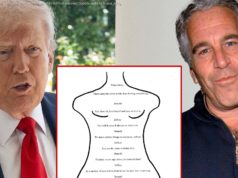A major highlight of the movie is when Auggie’s classmates discover he is no different from their other friends.
As a craniofacial surgeon with more than 30 years of experience in treating facial abnormalities and performing reconstructive surgery on children with congenital deformities, I am heartened to see that the film Wonder offers hope that tomorrow brings greater understanding and acceptance.
Wonder tells the story of Auggie Pullman, a fictional 10-year-old boy with a severe case of Treacher Collins syndrome — a rare genetic craniofacial disorder. Auggie must navigate new challenges in a new school, such as how to talk about his condition, make friends and handle bullying.
Due to the severity of his condition, Auggie has undergone nearly 30 surgeries before he enters middle school. When a classmate asks Auggie about plastic surgery, Auggie jokes, “ This is after plastic surgery — it takes a lot of work to look this good.” There is truth to this light-hearted moment. Auggie’s birth defect, which ranges in severity, is characterized by underdeveloped facial bones that affect his eyes, ears, cheeks, palate and jaw structure.
Many patients with craniofacial disorders undergo a series of plastic and reconstructive surgeries every year, starting at a young age. Statistics from the American Society of Plastic Surgeons reveal nearly 220,000 maxillofacial and craniofacial procedures were performed in the United States during 2016. Plastic surgery can make both functional and aesthetic improvements, but some deformities may remain even after surgical procedures, especially in severe cases.
I had the honor and pleasure to attend a special screening of Wonder with families, young adults and children with a variety of craniofacial anomalies. Their facial differences make them extremely visible to the world, yet their stories and struggles often remain untold. Many of the parents and young adults in my group were moved to tears as they watched Auggie’s story develop, because his trials and triumphs mirrored their own and affirmed they were not alone.
POLICING THE USA: A look at race, justice, media
Although Wonder is a fictional film, it represents reality for many of the children and young adults with craniofacial abnormalities. I witnessed this firsthand in discussing the film with them after the screening. Like Auggie, they understand how it feels to be judged by their outward appearance, and Wonder gives them encouragement and hope — a reminder that their facial differences do not define them. It’s my hope that Wonder can serve as a catalyst for millions of people to better understand craniofacial disorders and the amazing children who persevere with these conditions.
A major highlight of the movie is watching some of Auggie’s classmates discover he is no different from their other friends. He’s a smart, nice kid with a great sense of humor. It’s the same message we’ve heard about judging others based on their color, race or creed. Don’t do it.
We are all much more than our physical differences. I hope Wonder reminds patients with facial differences that they possess the strength, wisdom and courage to defy the odds and overcome their adversity every day.
Scott Bartlett, MD is a member of the American Society of Plastic Surgeons and chief of the Division of Plastic and Reconstructive Surgery at Children’s Hospital of Philadelphia.






![Drony nad Polską. Oto kiedy naruszały naszą przestrzeń powietrzną? [KALENDARIUM]](http://nhub.news/wp-content/uploads/2025/09/thumbb0c02e8630e5456d5896703b98be9600-100x75.jpeg)